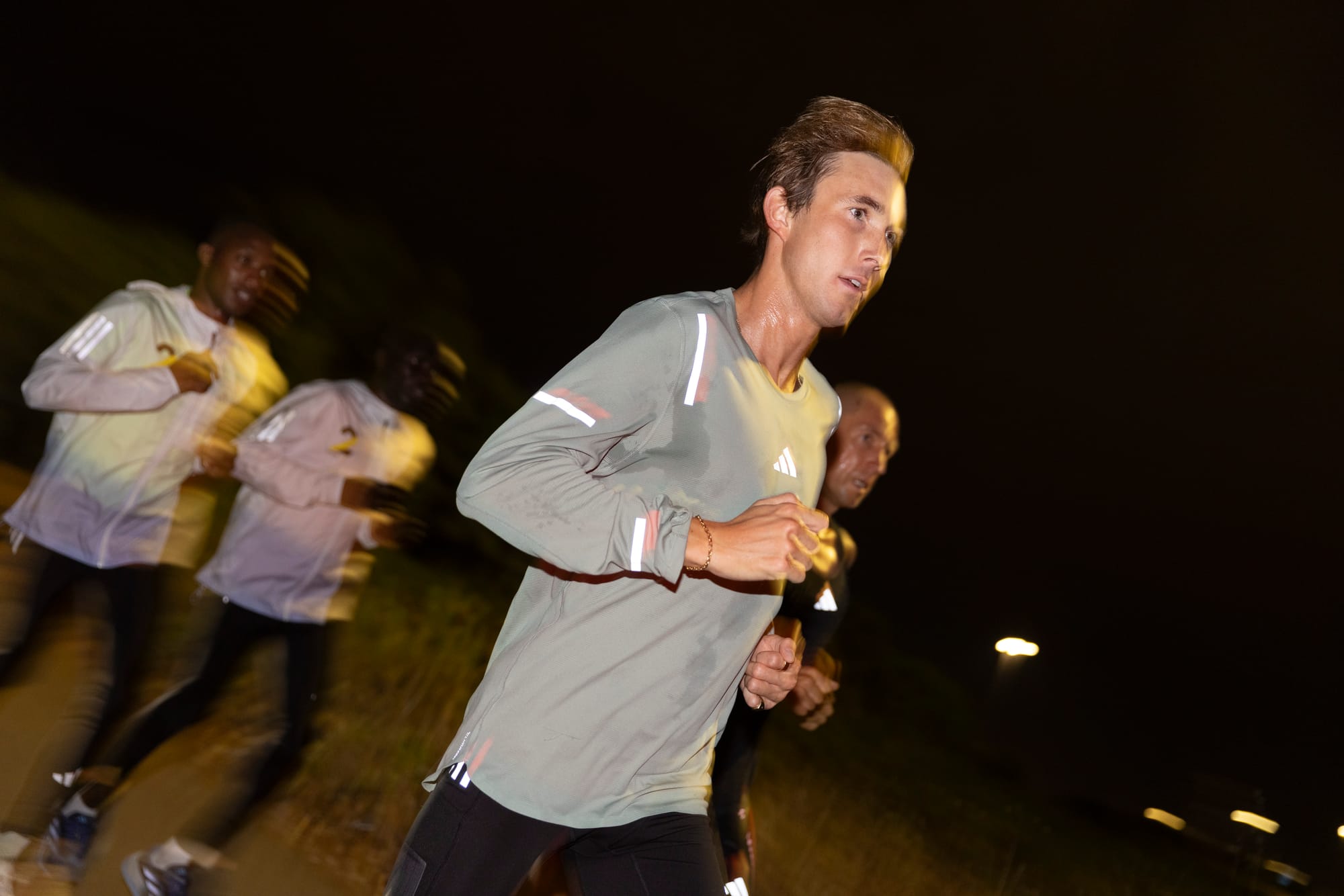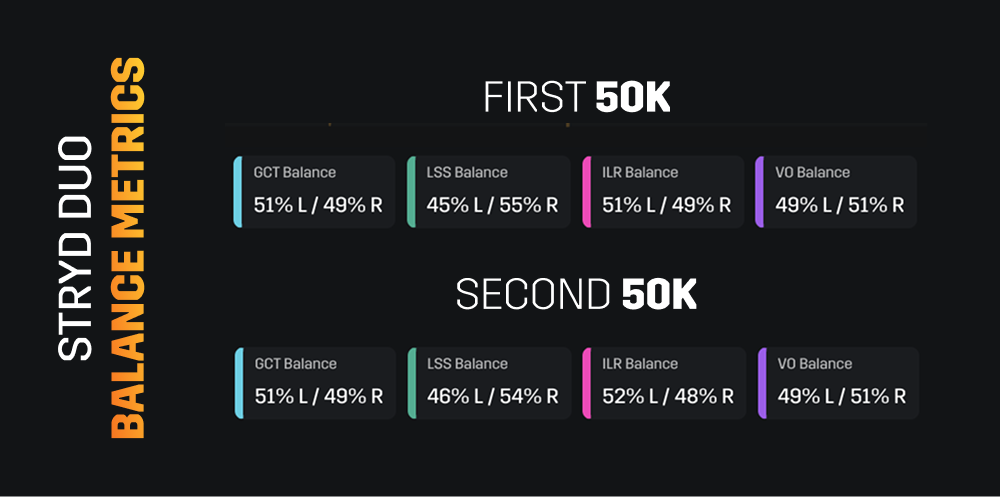Inside the Data: Charlie Lawrence Sets the Second Fastest Known Time for 100 Kilometers

On August 26, 2025, at the adidas "Chasing 100" event in Europe, Charlie clocked a 6:03:47 for 100 kilometers—beating the previous World Record of 6:05:35 by nearly two minutes and securing the fastest American and second-fastest time ever recorded for the distance.
But what does it take to sustain such blistering intensity over 62 miles?
Using data captured by Stryd Duo, we dive into the metrics that reveal Charlie's remarkable consistency, resilience, and strategic execution.
From precise power pacing to bilateral balance insights, this breakdown shows how Stryd's advanced tools tell the story of his run—and how they can help you unlock your own potential, whether you're chasing personal best times or further distances.

Steady Power Pacing: Holding Steady Through Stops and Elevation
Charlie's race was a masterclass in controlled intensity, guided by a power target of approximately 316 watts—his sweet spot for maintaining efficiency and steady power output over the ultra distance. For the first two-thirds of the run, he nailed this goal, averaging within 2% of his target despite real-world interruptions.
One standout challenge? Five short stops during the 6 hour effort. Each required extra effort to accelerate back to race pace, yet Charlie's power data shows minimal disruption returning to pace. His output rebounded swiftly each time, demonstrating the kind of metabolic resilience that Stryd helps runners build through targeted training.
Add in nearly 900 feet of elevation gain across the looped course, and the achievement becomes even more impressive. Stryd accounted for these undulations in real-time, guiding Charlie's to a stable intensity regardless of terrain.

Stability in Balance Metrics: Balance Metrics Stayed Rock-Solid
Key balance metrics—like Ground Contact Time Balance, Vertical Oscillation Balance, Leg Spring Stiffness Balance, and Impact Loading Rate Balance—remained stable from start to finish. This indicates no significant form breakdowns, even under duress. Even Charlie’s LSS Balance asymmetry remained stable, which indicates his resilience from overcoming an achilles injury from last year.
Stryd Footpath visualizations further underscore this poise. His footpath—a high-resolution 3D trace of bilateral movement—stayed remarkably consistent throughout, with only subtle changes in the final third as his pace naturally eased. The path grew slightly smaller toward the end, reflecting the slowdown, but without the erratic shifts that signal overcompensation or breakdown. Leg Spring Stiffness (LSS), a measure of how efficiently your legs absorb and return energy, varied by no more than 1 kN/m—a tiny fluctuation that highlights his biomechanical durability, a skill that Charlie has improved upon by routinely monitoring this metric.
What truly sets Charlie's data apart is the extraordinary stability across these metrics, even as the miles piled up. These stable metrics are the result of data-informed training. Stryd Duo empowers runners to track these trends over time, spotting early signs of fatigue, injury recovery, or the impact of drills and footwear. Captured with millimeter and millisecond precision by Stryd Duo, these data points paint a picture of an athlete who stayed strong without succumbing to fatigue.

Overcoming the Ultra Grind: Lessons from the Last Third
The final 33 kilometers tested Charlie's limits, yet his data reveals a runner who adapted when pushing the limits of human capability.
Even as fatigue set in during the final third of the race, his average power only dipped to about 94% of goal—a testament to his preparation and the precision of power-based pacing. This controlled fade allowed him to conserve just enough for a strong and steady finish.
The overall stability in footpath and balance metrics shows he managed fatigue intelligently—tailoring his effort to combat the inevitable slowdown without sacrificing form.
For everyday runners, this underscores how power data can guide you through tough spots, ensuring you run smarter, not harder.
Powering Your Own Breakthroughs with Stryd
Charlie Lawrence's 6:03:47 is a blueprint for ultra-endurance success, powered by insights that only Stryd can provide.
From holding a precise power target through interruptions to maintaining bilateral balance that wards off fatigue, his data shows how Stryd Duo and Footpath tools deliver deeper understanding of your runs. These features help you recover from setbacks, monitor fatigue, visualize progress, and make confident decisions to reach goals faster—indoors, outdoors, in training, or on race day.
Whether you're a novice building to your first ultra or an experienced runner eyeing new horizons, Stryd equips you to run at the right intensities, tailor your training and recovery, and learn from every step.
Ready to see inside your own data? Check out Stryd Duo today and start transforming your running journey.

